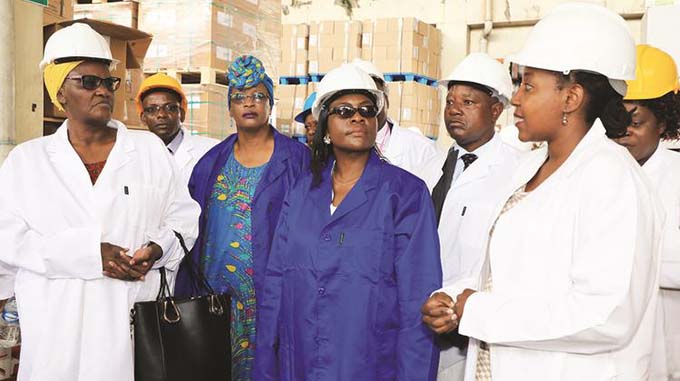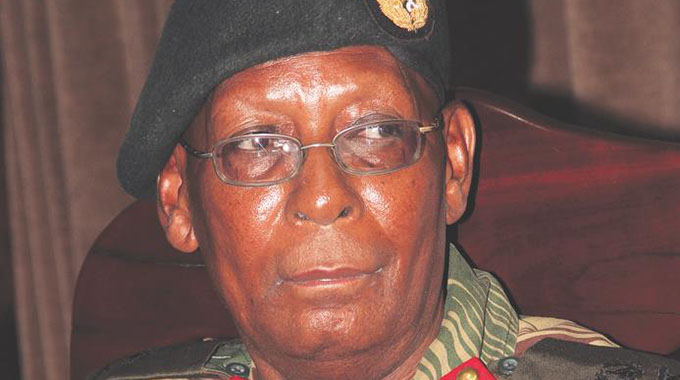These 5 engagements could be ED’s inspiration for Zim’s reconstruction

. . . but someone says don’t ‘box’ him
Tichaona Zindoga Acting Editor
On the sidelines of the just-ended African Union summit in Ethiopia, President Mnangagwa of Zimbabwe met with his counterpart from Estonia, Kersti Kaljulaid.
As we reported, Estonia has the edge in digital technology and e-governance.
But there is more.
Information available indicates that Estonia is the wealthiest of the 15 former Soviet Republics buoyed by a thriving electronics and telecoms sector and strong trade relations with Finland, Sweden and Germany and has made “a rapid transformation to embrace the free market”, according to a BBC report.
Estonia joined the European Union in May 2004, which prompted an investment boom.
It was slowed down in 2008 after its economy was hit by the global financial crisis, making the EU’s worst year for unemployment which soared to 15,6 percent in May 2009 from 3,9 percent the previous year.
“The government adopted tough austerity measures and won plaudits for getting the economy back into shape ahead of entry to the European single currency in January 2011,” says the BBC.
That sounds familiar enough.
But here is more on Estonia. In April 2017, Vivienne Walt, writing for the Fortune magazine, touts Estonia as “a preview to our tech future”.
Walt gushes: “For the rest of us Estonia offers a glimpse into what happens when a country abandons old analogue systems and opts to run completely online instead. That notion is not fanciful. In various forms, governments across the world, including those in Singapore, Japan and India, are trying to determine how dramatically they can transform themselves into digital entities in order to cut budgets and streamline . . ..”
Something fascinates about the “extreme-digital life” of Estonians. We are told that at birth, every person is assigned a unique string of 11 digits, a digital identifier that from then on is key to operating almost every aspect of that person’s life —the 21st-century version of a Social Security number. The all-digital habits begin young with Estonian children learning computer programming at school, many beginning in kindergarten.
Further, in 2000, Estonia became the first country in the world to declare Internet access a basic human right — much like food and shelter. That same year it passed a law giving digital signatures equal weight to handwritten ones.
“That single move created an entire paperless system,” Walt tells us. “Since no one was required to sign with a pen, there was no need for paper documents to pay taxes, open a bank account, obtain a mortgage, pick up a prescription, or perform most of life’s other tasks, other than marrying and divorcing.”
The Estonian Investment Agency (EIA), a part of Enterprise Estonia, the government agency promoting foreign investments in Estonia — summarises the economic story saying Estonia consistently ranks as a world leader in human capital, digital capability, and ease of doing business and that IT becomes the value driver in all industries.
Looking Est
There is something hugely symbolic in the romantic tale of President Mnangagwa meeting the Estonian leader.
It marked the fifth time in a month that President Mnangagwa was meeting a leader of a former Soviet Republic after his recent tour of Eurasia where he toured Russia, Belarus, Azerbaijan and Khazakhstan. It is a remarkable interest in a particular region by any leader.
The engagements covered significant areas of cooperation.
Zimbabwe and Russia have strong historical relations and are already cooperating in mining, trade, education and tourism.
Zimbabwe imports fertiliser, chemicals, machinery, paper and plastics, vehicle and aircraft parts, electrical and electronic equipment, rubber, iron and steel.
The biggest area of contact is the Darwendale Platinum Project worth billions of dollars.
Zimbabwe and Belarus are experiencing growing relations with the latter providing mining equipment at Hwange Colliery and Zimbabwe Mining Development Company which saw an increase in productions in both concerns. They are also cooperating in the area of gold mining while in the energy sector, focusing on hydro-energy, methane gas, solar energy generation and developing the nascent oil industry. Belarus is also set to supply tractors and spare parts.
Zimbabwe has opportunities to export tobacco, cotton and minerals while the European country will sell more machinery and equipment as well as potash.
With Azerbaijan Zimbabwe will mainly explore two areas of cooperation, that is, tax administration activities and Promotion and Reciprocal Protection of Investments.
Azerbaijan has set sights on investment opportunities in Zimbabwe’s mining, energy and tourism sectors, on the back of its increased readiness to invest in Africa.
Azerbaijan, according to indications, has significantly increased its capital investments abroad involving both state-run and private companies.
Lastly with Kazakhstan, Zimbabwe could export citrus fruit, coffee, tea and tobacco while importing agricultural machinery, petroleum products, construction materials and textiles.
A key pattern thus emerges from these engagements, from a qualitative perspective.
President Mnangagwa systematically ranged the five countries according to their economic models, and how Zimbabwe could learn from them — from the primary industries of mining and agriculture to the digital, paperless economy.
Estonia is like the Nirvana. For a good cause.
A post-Soviet states’ inspiration?
As I was preparing to write this piece, an official who has worked closely with the President advised me not to attempt to define his approach in a particular way. Or in his words, the “key is not to box him within an ideology or model. Allow him to define himself”.
That is a difficult exhortation for people who want to make sense of the word and process prisms within which readers can understand issues.
But President Mnangagwa has actually made some definitive approaches that could constitute, very loosely, something between slogans and ideology.
Zimbabwe is open for business. Vision 2030.
The former largely defined the early days of President Mnangagwa’s presidency after coming in in November 2017 as he sought to attract foreign direct investment and selling the country on its reforms and opening up following years of the inward-looking administration of former president Robert Mugabe.
And he made a significant move by doing away with the Indigenisation and Economic Empowerment law whose 51-49 percent equity provision in favour of the black people of Zimbabwe was largely deemed undesirable by investors.
On the other hand, he sought to attract more business by implementing policies that aid the ease of doing business.
Today, the slogan has been slightly altered to, “Zimbabwe is open for business and dialogue”, which largely speaks to the economic diplomatic thrust the Government is pursuing, including with formerly hostile countries.
Indeed, there is another principle that ED has pursued: that Zimbabwe must “engage and re-engage”.
Yet the overarching policy is the pursuit of Vision 2030, which seeks to make Zimbabwe an Upper Middle Income Economy by that year.
All the transitional and developmental elements plans fall into that. It is the ultimate vision that the Head of State has for Zimbabwe.
However, can one be able to locate his marked and systematic interest in Eurasia?
The answer is yes.
There are key lessons from that part of the world that ED could take home, both for Zimbabwe as a unit and member of a group of nations.
In 2016, Irena Benešováa, Luboš Smutka wrote a paper detailing how Eurasian countries — led by Russia and Kazakhstan — had seen rising GDP “very significantly” with this growth being affected by the transformation of the economies, growth in prices of mineral resources and a major influx of foreign investments. According to the two authors, growth of the economies of the countries was tied to a high level of connection and synchronisation of their economic cycles.
And a key lesson: “There is a marked potential for economic co-operation between individual countries, and this can be deepened significantly if a number of tensions and conflicts in terms of politics and power which exist between the countries looked at can be solved.”
Zimbabwe can relate.
Looking Eurasia is not all rosy, though.
There is a world of difference between the futuristic glory of Estonia and the poverty of Tajikistan, the poorest nation of all the 15 former Soviet republics that has been ravaged by civil war which killed up to 50 000 with a tenth of the population fleeing the country. The economy is adjudged to never really have recovered from the mid-1990s’ crisis and poverty is widespread.
But then, President Mnangagwa made the best of his picks and these could be key to understanding how he seeks to reconstruct Zimbabwe in the Second Republic.










Comments